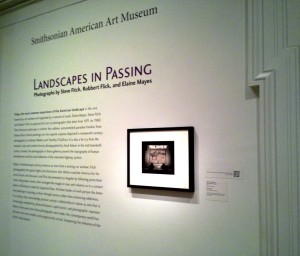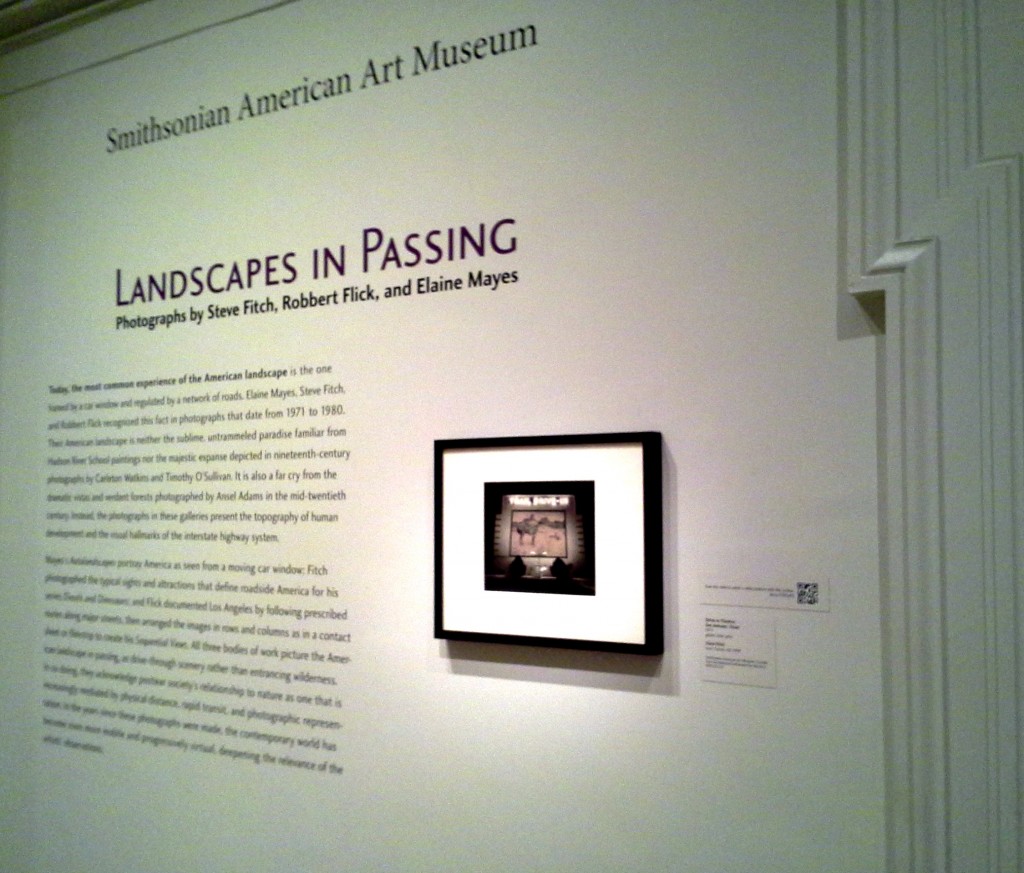 The end of summer, the season of road trips and family vacations, cross-country moves and college drop-offs, is a fitting moment to reflect on how highways and automobiles have changed the ways in which we view and interact with landscape. An exhibit currently at the Smithsonian American Art Museum, Landscapes In Passing: Photographs by Steve Fitch, Robbert Flick, and Elaine Mayes, offers varied perspectives on this question as well as evocative views of the late 20th century United States.
The end of summer, the season of road trips and family vacations, cross-country moves and college drop-offs, is a fitting moment to reflect on how highways and automobiles have changed the ways in which we view and interact with landscape. An exhibit currently at the Smithsonian American Art Museum, Landscapes In Passing: Photographs by Steve Fitch, Robbert Flick, and Elaine Mayes, offers varied perspectives on this question as well as evocative views of the late 20th century United States.
The photographs by Elaine Mayes come from her Autolandscapes series (1971), which captures scenes shot from the window of a moving vehicle. Many of the images document a cross country drive in the early 1970’s, not too long after the completion of the interstate highway system. A journey that once took weeks, could now be completed in a matter of days, allowing the traveler to fly through the landscape, perhaps noticing changes in color or vegetation, but little else. In viewing Mayes’ photographs, I wondered how technology serves to frame a particular view of place, opening up some vistas, while closing others. The high-speed highways made the country accessible, but it also fomented more superficial and homogenized experiences. How has the use of GPS changed landscape views? Will tools like google earth offer new frames, both more and less limiting.
Steve Fitch’s Diesel and Dinosaurs (1976) offers a more thorough explanation of the U.S’s postwar roadside landscape, especially that of the desert West. The photographs of kitschy dinosaurs at first bring a smile, but then a different mix of emotions – nostalgia, disgust, unease, curiosity. How and why did these huge sculptures spring up in so many places? What are the contemporary “dinosaurs,” which future generations might look at with the same feelings? What is the relationship between tourism, marketing and place? Can yesterday’s tourist trap becomes today’s authentic roadside experience?
The final set of photographs are Robbert Flick’s Sequential Views (1980). In a striking departure from Fitch’s work, Flick presents orderly grids of images, documenting Los Angeles streetscapes. Moving from block to block, Flick deliberately captures the impact that automobiles have had on the shape of the American city.
Landscapes in Passing is a small exhibit, but well worth a visit to those interested in thinking about the relationships between transportation and various ways of seeing and shaping landscape. In addition, the American Art Museum has developed a wonderful online presence to accompany the show, with even more materials and commentary.



